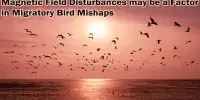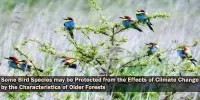Scientists fear that the Eurasian lynx will disappear from France if something isn’t done soon. By the end of the decade, this elusive wild cat, which was brought back to Switzerland in the 1970s, had crossed the French border. However, a genetic analysis published in the journal Frontiers in Conservation Science revealed that the French lynx population is in dire need of assistance to survive.
“Given the rapid loss of genetic diversity, we estimate that this population will go extinct in less than 30 years,” said Nathan Huvier of the Centre Athenas, corresponding author. “This population urgently needs new genetic material to become sustainable.”
The missing lynx
This population of lynxes, hidden deep within the Jura Mountains, is not well known. Scientists’ observations put the population’s size at a maximum of 150 adults and indicate that it is not expanding to a size that is sustainable since it is not well connected to the larger, healthier populations in Germany and Switzerland.
Researchers think that a combination of car accidents, poaching, and inbreeding depression a condition in which a lack of genetic diversity causes issues with reproduction and survival have stunted the population’s expansion.
“As there is a lack of genetic monitoring of the lynx in France and we consider that crucial for species conservation, we took the lead and did this work,” said Huvier.
The team collected genetic samples between 2008-2020 with the goal of determining the genetic health of the population. In order to prevent stressing healthy animals, samples were only taken when caring for lynxes who were already injured, dead, or missing cubs due to the population’s vulnerability.
Reintroduction, replacement of poached lynxes, and exchange of orphan lynxes between care centers are the best short-term solution for this population to remain alive, and it will give it a chance to develop and connect with other populations in Europe.
Nathan Huvier
“For us, this method is more ethical as there is no capture and thus stress induced for DNA sampling only,” Huvier explained.
The team successfully collected more over half of the estimated population, or 88 samples. To increase the reliability of the findings, some samples were eliminated, including those with low amplification rates, genetic loci that could not be genotyped, and those that only showed one allelic form when data from other populations suggested that a population would typically have multiple different forms. After this process was complete, they had 78 samples covering 23 genetic loci.
Emergency action needed
References derived from the progenitor population from the Carpathian Mountains were compared to these genetic samples. The researchers came to the conclusion that although the French lynx population is assumed to consist of between 120 and 150 individuals, the actual population size required to exhibit this degree of genetic variety is only around 38 individuals.
The authors cautioned that this is likely to be an overestimate, so the number may be even lower. Even more concerning is the unusually high inbreeding coefficient, which measures how likely it is for two mating members of the same group to be closely related.
A person’s two copies of an allele at any particular site in their genome have a 41% chance of having come from a common ancestor of both their parents. There is an urgent need for new genetic material to prevent population collapse.
The authors acknowledged that introducing more lynxes is politically difficult. They proposed that stronger enforcement of the law in cases where poaching is confirmed and road signs alerting drivers to the presence of lynxes will help protect the remaining population.
Meanwhile, the exchange of orphaned cubs between wildlife rescue facilities and the replacement of poached lynxes with animals from genetically better populations will help save it from genetic collapse.
“We want this work to support action for lynx conservation,” said Huvier. “Reintroduction, replacement of poached lynxes, and exchange of orphan lynxes between care centers are the best short-term solution for this population to remain alive, and it will give it a chance to develop and connect with other populations in Europe.”
















